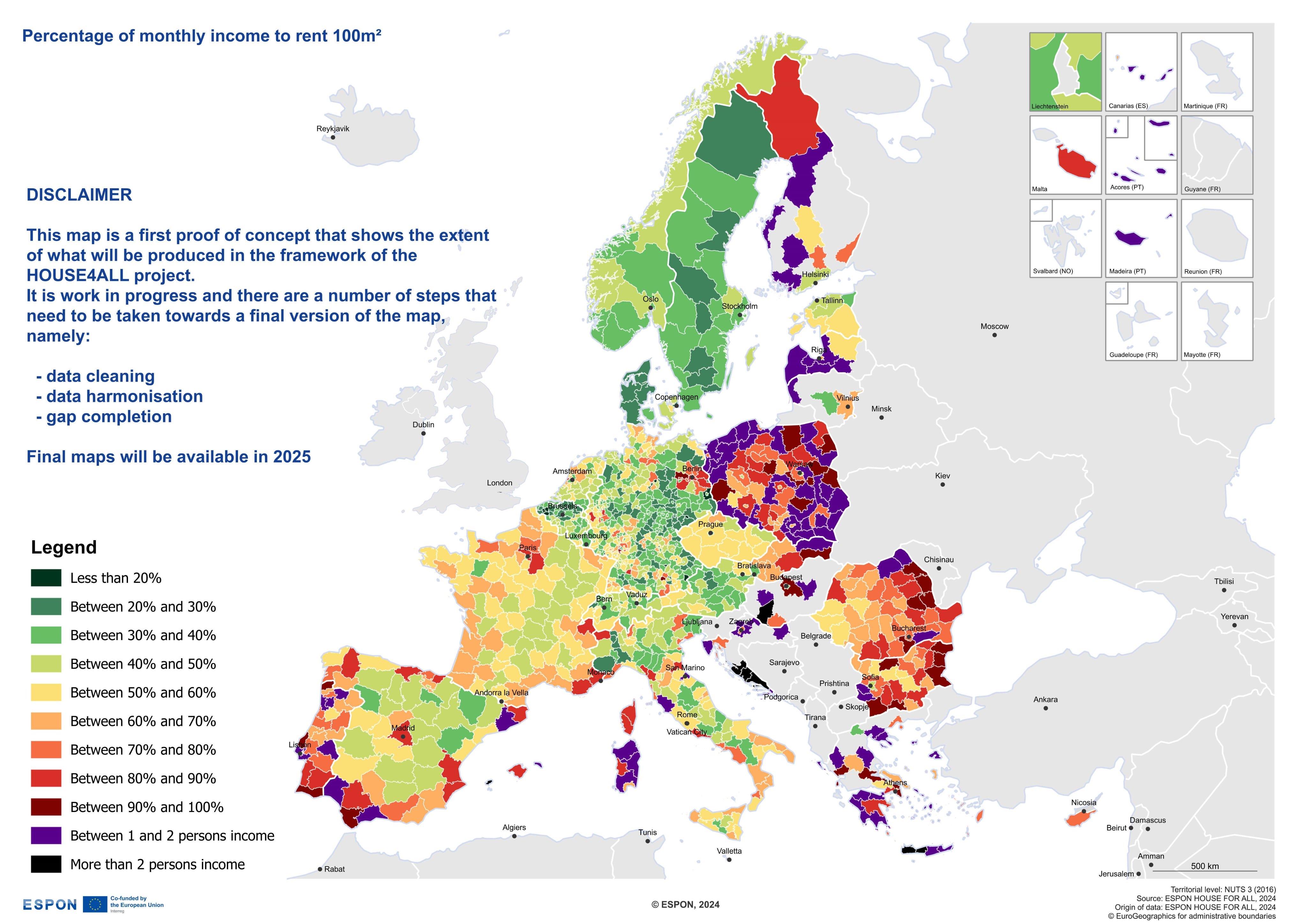Monthly Income Percentage for Renting 100m2 Map


Marcus Rodriguez
Historical Geography Expert
Marcus Rodriguez specializes in historical cartography and geographic data analysis. With a background in both history and geography, he brings unique...
Geographic Analysis
What This Map Shows
The visualization titled "Percentage of Monthly Income Needed to Rent 100m2 by European Region" offers a compelling look at the affordability of housing across various regions in Europe. It highlights the proportion of income that residents in different areas must allocate to secure a 100 square meter rental. This metric is crucial for understanding housing affordability, as it directly reflects the economic pressures faced by individuals and families in diverse European locales.
Deep Dive into Housing Affordability in Europe
Housing affordability is a pressing concern across the globe, but in Europe, the issue manifests in unique ways depending on local economies, market conditions, and cultural attitudes toward homeownership and renting. The percentage of income required to rent a standard apartment, like a 100m2 unit, serves as a vital indicator of economic well-being.
In many European countries, the rising costs of living, combined with stagnant wages, have led to an increase in the proportion of income spent on housing. According to various studies, it's generally recommended that individuals should not spend more than 30% of their gross income on housing. However, in several regions, this threshold is not just being exceeded; it is becoming a norm.
For instance, cities like London and Paris often see renters dedicating more than 40% of their income to housing. This phenomenon is not just a statistic; it can lead to significant lifestyle changes, where families may have to compromise on food, transportation, and healthcare to afford rent. Interestingly, some regions with lower rental costs, such as parts of Eastern Europe, still face other economic challenges, including lower average incomes, which complicates the picture of housing affordability even further.
Moreover, the dynamics of the rental market are also influenced by factors such as urbanization and population growth. Cities with surging populations often experience inflated rental prices due to demand outpacing supply. Urban centers like Berlin and Amsterdam are witnessing this trend, where tech industries and creative sectors attract young professionals, driving up rental costs. Conversely, regions with declining populations often see a surplus of rental properties, leading to lower prices but also reflecting broader economic decline.
Regional Analysis
When we examine the map, we can see significant regional variations in the percentage of monthly income required to rent a 100m2 apartment.
1. **Western Europe**: In this region, countries like Switzerland and the Netherlands show some of the highest percentages, often exceeding 40%. The cities are not only economically vibrant but also desirable, which drives up rent. For example, Zurich and Amsterdam are renowned for their quality of life but come at a steep price for renters.
2. **Southern Europe**: Countries like Spain and Italy vary widely. In cities like Barcelona, the cost of renting has surged, leading to percentages that can rival those in Western Europe. However, rural areas in these countries may offer significantly lower percentages, reflecting localized economic conditions.
3. **Eastern Europe**: Here, the map reveals a contrast. While cities like Warsaw and Budapest have seen rising rents in recent years, the overall percentage of income required for rent is still lower than in Western Europe. This reflects both lower average incomes and a slower pace of gentrification in many areas.
4. **Northern Europe**: Scandinavian countries often feature a high standard of living with robust social safety nets, which help buffer the impact of high rental costs. Even so, cities like Copenhagen show that renters still allocate a significant portion of their income to housing.
The regional disparities are indicative of broader economic trends and cultural attitudes towards housing. For example, in some Nordic countries, there is a strong emphasis on accessibility and social housing, which can alleviate some pressure.
Significance and Impact
Understanding the percentage of income needed to rent a 100m2 apartment in Europe is not just an academic exercise; it has real-world implications. High rental costs can lead to social stratification, where lower-income families may be forced to compromise on their living situations, often leading to overcrowded conditions or the need to relocate to less desirable areas further from employment centers.
The implications also extend to urban planning and policy-making. As cities continue to grow, local governments must consider how to balance development with affordability. Policies promoting affordable housing, rent control, and urban renewal efforts are critical in addressing these challenges. Moreover, as we look ahead, the ongoing trends of remote work could shift rental demands, potentially affecting prices and percentages in previously overlooked regions.
In conclusion, this map is more than a visualization; it encapsulates the economic realities many Europeans face today. It provides a snapshot of where housing affordability stands and highlights the urgent need for policies that ensure equitable access to housing for all citizens.
Visualization Details
- Published
- October 15, 2025
- Views
- 116
Comments
Loading comments...